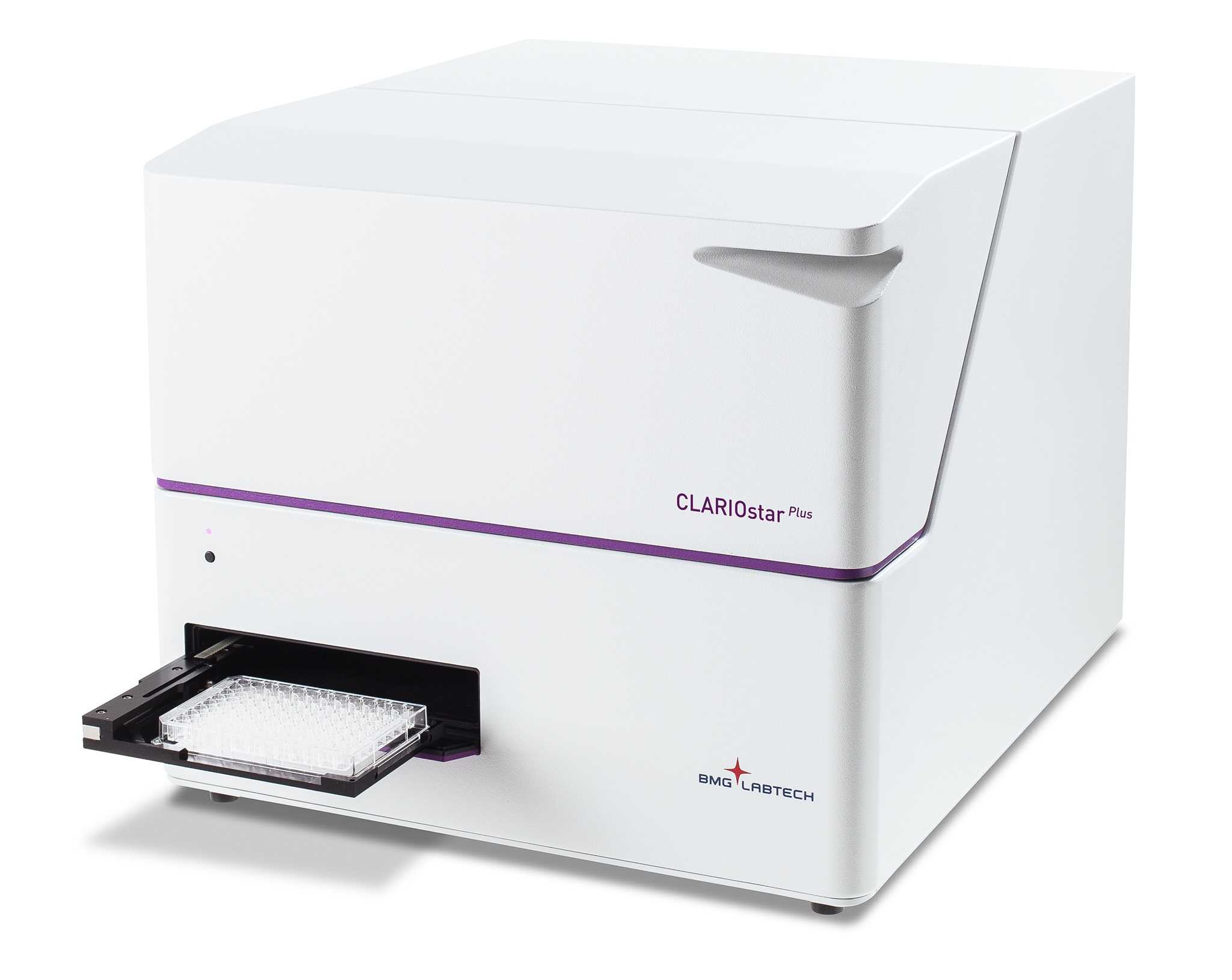We are equipped with BMG Labtech’s CLARIOstar ®, a multi-mode plate reader. It comes with patent LVF monochromators, a UV/Vis spectrometer, and high transmission optical filters. The CLARIOstar ® has outstanding flexibility and unmatched sensitivity, enabling us to provide top-notch assay development solutions to our clients. With this instrument, we perform AlphaLISA®, HTRF, and a wide range of enzyme activity assays.

AlphaLISA (Amplified Luminescent Proximity Homogeneous Assay-Linked Immunosorbent Assay) is a bead-based assay technology used for the detection and quantitation of biomolecules such as proteins, peptides, and small molecules; all in a highly sensitive and specific manner.
This technique is particularly well suited for applications in the biotech industry including drug discovery, biomarker research, and life sciences due to its robustness and scalability.
AlphaLISA relies on the proximity-based interaction between donor and acceptor beads. When these beads are brought close together by a specific interaction between an analyte and the biomolecules conjugated to the beads, excitation of the donor beads by a laser or LED light sources causes the release of singlet oxygen molecules. These singlet oxygen molecules can diffuse a short distance, and if they reach the acceptor beads, trigger a reaction that results in a bright fluorescent signal. The intensity of this signal is directly proportional to the concentration of the target analyte in the sample.

A biotinylated antibody binds the streptavidin-coated donor beads, while a second antibody is conjugated to the AlphaLISA acceptor beads. In the presence of the analyte, the beads come together, and excitation at 680 nm generates singlet oxygen, triggering light emission at 615 nm.
HTRF combines fluorescence resonance energy transfer (FRET) technology with time-resolved measurement (TR-FRET) to offer a powerful tool for detecting molecular interactions in a homogeneous (no-wash) format, which is highly beneficial for high-throughput screening and complex assay development.
HTRF (Homogeneous Time-Resolved Fluorescence) is a versatile and robust technology widely utilized in the biotech industry for various applications including drug discovery, biomarker identification, and life sciences research
HTRF technology offers high sensitivity and specificity by reducing background fluorescence through its time-resolved aspect. As a homogenous assay, it eliminates the need for wash steps, simplifying the process and minimizing sample handling and allowing for high-throughput screening applications. HTRF is versatile and adaptable, suitable for studying diverse molecular interactions like protein-protein, protein-peptide, protein-DNA/RNA, and receptor-ligand binding.


HTRF combines fluorescence resonance energy transfer (FRET) technology with time-resolved measurement (TR-FRET) to offer a powerful tool for detecting molecular interactions in a homogeneous (no-wash) format.
HTRF assays rely on the energy transfer between a donor fluorophore and an acceptor fluorophore when they are in close proximity, typically within a few nanometers of each other. The donor molecule is excited by a light source, and if the acceptor molecule is close enough, energy is transferred from the donor to the acceptor. This transfer causes the acceptor to emit light at a longer wavelength. The time resolved aspect involves measuring the fluorescence signal after a short delay, allowing the short-lived background fluorescence to decay, which significantly improves the signal to noise ratio.
A biotinylated antibody binds the streptavidin-coated donor beads, while a second antibody is conjugated to the AlphaLISA acceptor beads. In the presence of the analyte, the beads come together, and excitation at 680 nm generates singlet oxygen, triggering light emission at 615 nm.
This diagram demonstrates the principle of HTRF, showing that excitation of the donor at 337 nm causes emission at 620 nm in the absence of interaction (A). When interaction occurs, FRET enables the acceptor to emit at 665 nm (B).
AlphaLISA is a powerful tool for the biotech industry, offering sensitivity, specificity, and high throughput for the quantitative analysis of biomolecules. Its adaptability across a range of applications from drug discovery to biomarker research makes it an invaluable asset in the biotech toolkit.
Like AlphaLISA, HTRF is a powerful and flexible assay technology that offers significant advantages for researchers. Its high sensitivity, specificity, and adaptability to high-throughput formats make it a valuable tool for a wide range of applications.
Please contact us today to discuss your AlphaLISA and/or your HTRF needs. We would be happy to assist you.